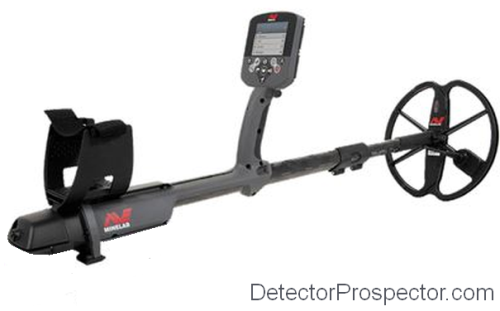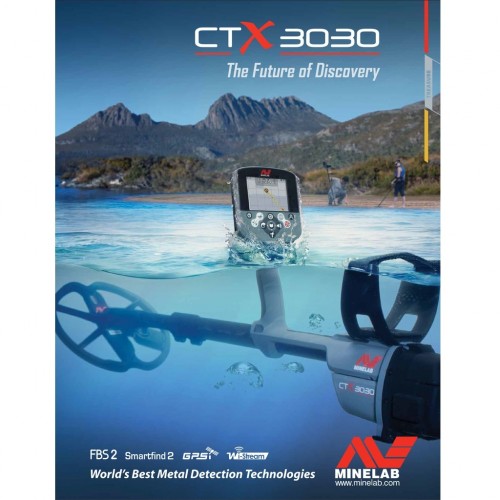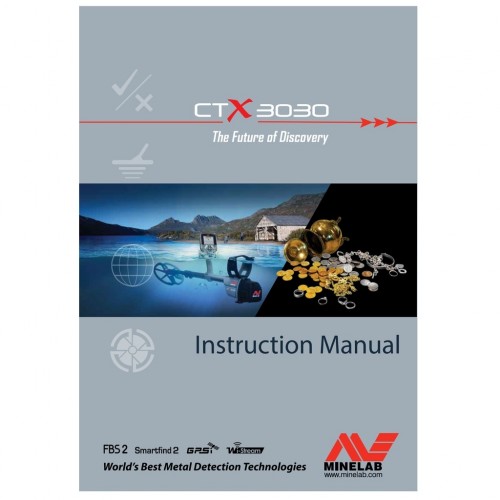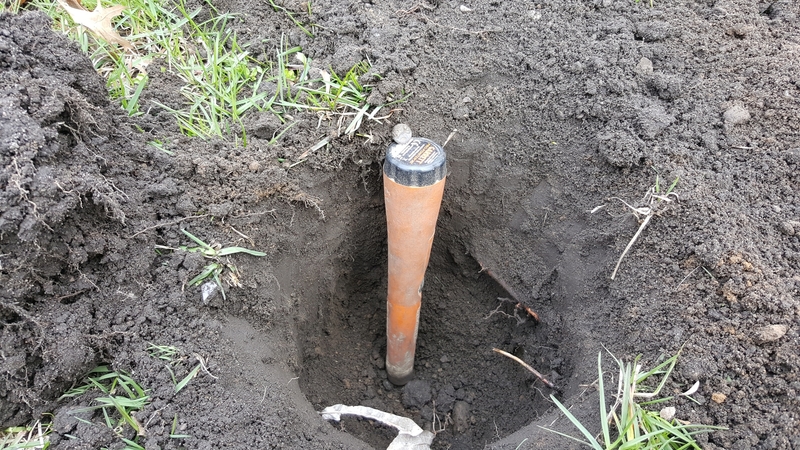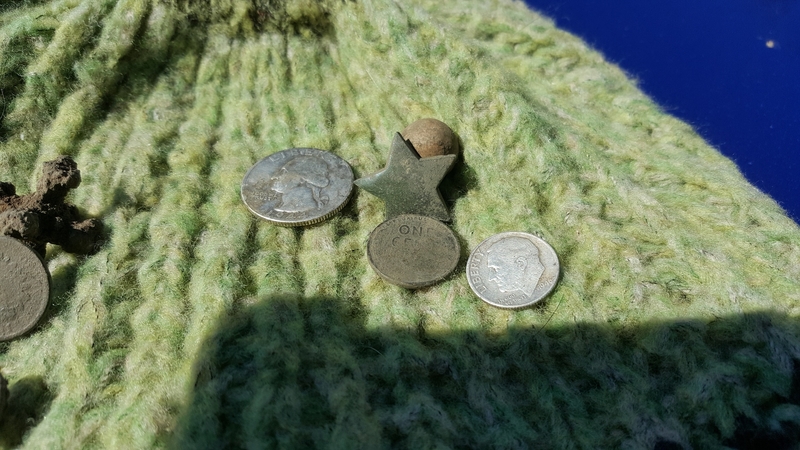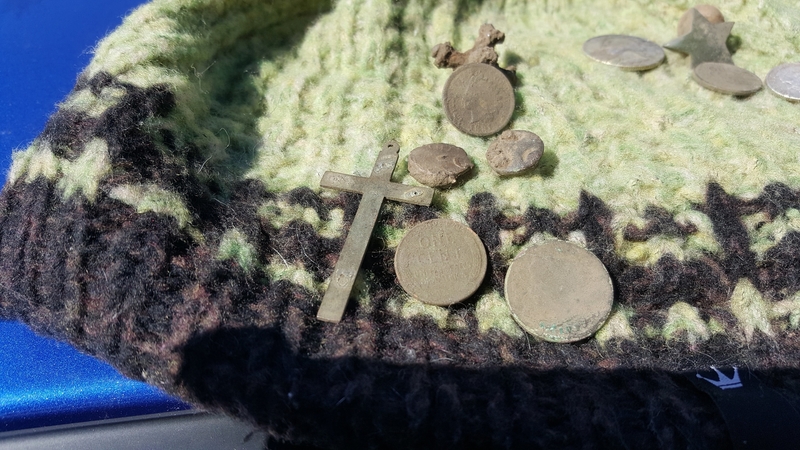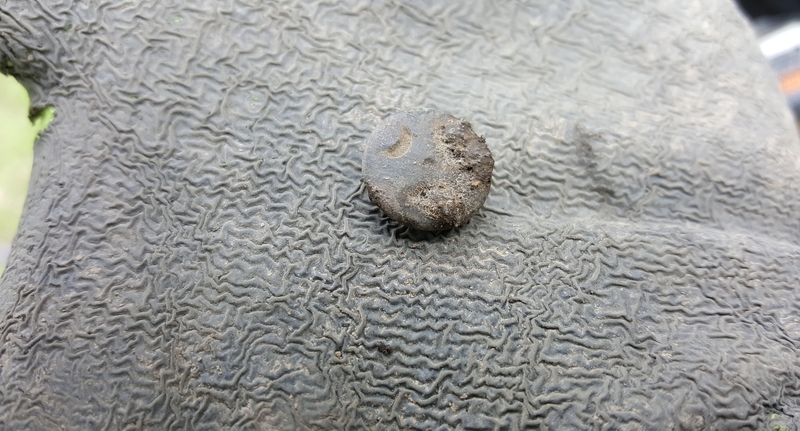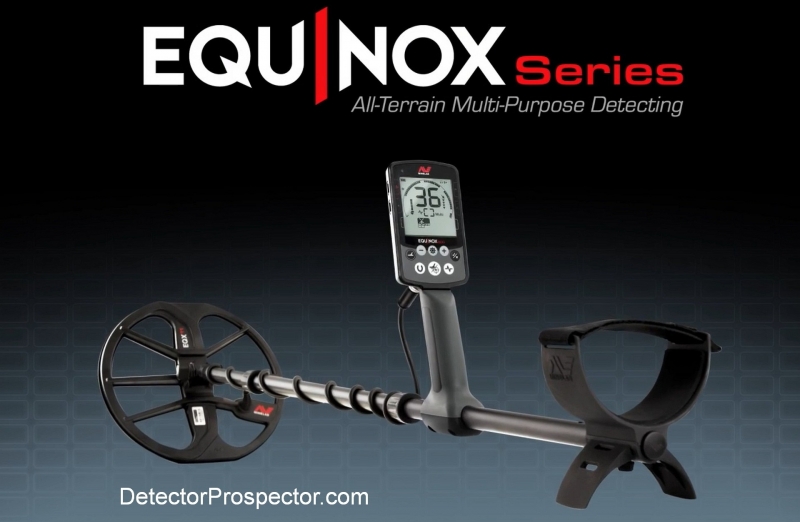Search the Community
Showing results for tags 'minelab ctx 3030'.
-
Not a lot of words here...I was Just doing my usual business trip downthere and luckily the camera had enough battery to capture the appearing fish... Enjoy! https://youtu.be/qP0ymoFlkHE
- 4 replies
-
- minelab ctx 3030
- gold found
-
(and 1 more)
Tagged with:
-
I’m heading up to Georgetown gold fields, in North Queensland Australia soon. Do not want to get into the new GPX 6000 or GPZ 7000 yet and besides that I do not live close to a gold region. I currently own a CTX 3030. I know that the Monster is not in the same league as the more expensive units but at just over $1,000 it is an option to purchase. But my thoughts are that the CTX I already own may do pretty much the same as the Monster, plus it has discrimination ability. Could someone please enlighten me. Thanks.
-
Hi! Another classic question,but i have a ctx3030 with 17inch coil and do mostly detecting in the saltwater.It goes deep and thats what i'm looking for,depth,,I know that SDC2300 is a PI machine and very sensitive to gold.But when it comes to depth comparison in saltwater and knowing the SDC2300 has 8 inch coil,then the question is which detector goes deeper?is it worth buying that expensive unit just for saltwater beahhunting?
-
Been fishing for about 2 years and I must say the break from the detecting has done me a world of good. Dug up the CTX from the attick, gave it a dusting off. And while I was figuring out how to ride a bike again. All the mist was blown out of my head and we got down to the nitty gritty. Bought myself a new GPS unit to log waypoints. I’m not wandering around like a drunk anymore, this time around I’m gridding. As a beach hunter, tried the dirt and parcs. But my heart belongs to the beach, pretty obvious when you like fishing and fresh air. So the obvious choice for logging finds and hotspots is Navionics Boating App, weather and tides integrated. Several outings with the CTX and a scarred coil protector has opened my eyes and forced me out of my comfort zone. Last time around I tried to use the CTX like an Excalibur. This time I listened and let it talk to me. Learned the CTX language a bit. A few outings later I the happy owner of another ring and my most prised CTX targets: a stainless screw of 0,8 gr found on the wet slope that was just a slight blip in the landscape. And a piece of stainless wire 4 cm in length weighing in at 0,3 gr at the wash. People say the Equinox 800 can find gold chains, but surely if the CTX can detect such small stainless items. It has a chance at bringing home the goods. GB manual, Sens running borderline, All Metal and trying to wear out the coil cover. I’ve watched countless Equinox 800 vids, seems like no other detector is made anymore 🙂 But at the beach people aren’t finding gold chains by the dozen. Just the usual rings and coins. Are they not using it to it’s full potential?? Anyhow still happy with my CTX, but that gold chain I found with my Equinox 800 MKI is still bugging me to get another. Maybe the Equinox 800 V3 MKIII will be more to my liking. Or have I learned a valuable lesson,... LISTEN and DIG.
-
I finished my channel's intro footage, squeezing some of the last finds in less than two minutes... Hope you enjoy the atmosphere 🙃. Will be difficult to keep it updated constantly with all the work I'm next to start on dryland for water sessions improvement, but keep an eye on my diary now and then🔥 https://youtu.be/1kyGlM9-_do
- 6 replies
-
- whites tdi
- minelab ctx 3030
-
(and 1 more)
Tagged with:
-
Minelab has five key products under development. It should be a pretty good bet that with the CTX 3030 being so old it does not even appear on the timeline below, that a product refresh is in the works. We also all know Multi-IQ was a big success. And one thing I know about Minelab, is the V2 version of anything is the one to die for. They usually come out with something totally new as proof of concept, and then the next version or two refines that into everything it really can be. The main question I have is the hardware. Will the new model still use the existing CTX housing? It’s a little heavy, but well balanced, and does allow for much more battery capacity. Or do they use the Equinox design? Hard to imagine in an upscale model, so I’d kind of doubt that. Something brand new, with the best features of CTX, but lighter weight? A new design would help keep the price down, which is a key now if you really want a best seller. New Minelab Ultimate The most requested thing in Equinox is more target range, so mating a CTX type display with Multi-IQ would seem a bit of a no-brainer. All I know is that if a Minelab can successfully put the best of CTX and Equinox together in a single detector, something that would make owners of either of those detectors want one, it could be another major home run for Minelab. And yes, it is the next detector that I personally am waiting for, now that I finally got an Impulse in my hands. Well, and whatever follows the GPZ 7000. Impulse plus CTX replacement plus GPZ follow up is what I’m shooting for as my future personal lineup.
-
OK, so I attended a seeded hunt sponsored by Minelab just before the release of the CTX. Minelab held a marketing program where they introduced the CTX and touted all its attributes . When it was handed to me I thought "what a beast, what a pig. I don't need GPS, I'll buy my own GPS if I want one". Now I know its an excellent detector when it comes to finding certain stuff, in certain environments, so I'm not bashing its performance. Its the way its built that I think is ridicules. Every other detector has about the same size lower rod. They cost about $14 - $20. CTX close to $200. The Arm cuff must run about $50. Coils $295 & up. I've got to think Minelab worked really hard trying to figure out how to make it expensive. I'm sure glad they have finally seen the light with the Equinox. Anyone else think they over built the CTX just to make a bunch of extra bucks?
-
I am considering the purchase of a CTX 3030 and was wondering what would be the best/better alternative there is to the CTX 3030? I live in upstate NY and am relatively new to metal detecting and haven't traveled far to detect, but I do plan on expanding my distance as I properly learn a machine so that I don't waste a lot of travel expenses while learning. I figured if I am going to spend time learning a good machine, I might as well get the better choice and learn that 1. I have an Anfibio Multi now and am in the process of learning what the machine can do and how it should be run. I am by no means putting the Anfibio down. I just figured seems I have a lot of learning to do, I should do it on the best choice of a machine and learn that one instead of learning what I have now and then possibly having to learn another. I don't have a lot of time to learn several machines and can barely make time as it is, so I want to make the most efficient use of that as well because I do plan on becoming a serious and proficient detector as time and experience,also, as many of you know.. money too plays in as well and is why I want to make the best choice now. I could always resell my slightly used Anfibio if needed to get or step into a better/best choice. Any help and advice will be appreciated. Thanks.
-
Hello friends! Iam very close to leave to Tanzania now. Up until now kam training with a cheap detector Form China. I left the plan to buy a gpx cause i can hardly use it in Europe so now iam so i want to buy now: An Equinox 800 or a ctx 3030. So what i know is that the equinox came out a few years after the ctx and that it has a special mode for prospecting Gold. Does anyone has an expirience with both detectors and can tell me whats fits better for high Mineral ground and prospecting gold? Or whats would you prefer? Honestly i want to stick with minelab cause i heard a lot oft good things. THX greetings Erik
-

Minelab Ctx 3030 For Tanzanian Goldfields?
Erik_in_Mission posted a topic in Minelab Metal Detectors
What do you think about that detector for Tanzania? Greetings Erik -
I heard a rumor about a new CTX. Supposedly for Detectival. Anyone else heard that?
-
-
-
My old model CTX leaked in salt and the plate that goes into the cell (housing side) has been eaten off. Anyone have this problem and find a way to restore ;contact? I'm looking at a bit of copper wire in the slot to contact where the plate sat...brutal makes me sick how bad this gasket seating is on this model. Ive tried everything to keep it dry. cjc
-
I was one of the first people to get an Equinox 800 when they came out earlier this year. It has been a lot of fun and I have found some of my best beach finds with it. (A gold chain and silver ring.) I've even found 2 little nuggets and an attractive specimen. Until today I put my 3030 in mothballs for the right time and I'm here to tell you that the 3030/17 is a great beach detector for my area of Southern California. It covers a large area and it goes deep. It goes deeper on average than the 800. I doubt that would be the case if the 800 gets a larger coil but for now my 3030/17 setup with a hipstick (weightless) can out hunt the 800. I did learn a few things about signal sounds from the 800 that helped me find a little chain today so the 3030 can hunt. We all know the 800 is a great all around detector and I think it is going to beat a 3030 in a park, field or trashy area where you need a faster detector to unmask a good target. It will be my backup to the 7000 for finding gold because it is light and fun. It is not going to out do the 7000. My wife can use the 800 on the beach any time she wants and I won't feel like I have to buy a 600 or an 800 if I go with her. So, I'm glad I didn't sell my 3030 and my 7000. Mitchel
-
Sorry if this thread has been discussed before. (I did have a look around the forum but couldn't find a comparison between machines) I've decided to have ago at coin/relic hunting. When talking to a dealer that regularly detects I got the impression that the 3030 was still an all-round better machine than the equinox. The purchase price is not part of the decision, more so id like to purchase something I'm going to be happy to keep as i learn more about relic hunting. My wife and I regularly head off on short trips and would like to go to other areas other than the gold fields all the time. I'm thinking the ability to detect beaches/parks and old historic sites would be nice. Although I've often thought id love to have something that could go over old-timers gold camps and discriminate out the iron better than the gpx4500. So the question is what would most people get? The 3030 or the Equinox 800. Or would there be some other machine that would be worthy of consideration?
-
Ever have one of those days not one stinking old coin just some assorted clad that was Saturday so I licked my wounds and went back Sunday so I finally got out to the fairgrounds to try out the nox . Sunday was better took the ctx and nox hunted with the nox the coins were 2 to 3 inches deep all had nails was running 7 for recovery speed park 1 iron bias The nox called the merc at 2 inches deep at 20 I had high tones set from 19 and up and nickels open at 12 to 13 the ctx called it iron except one sweep would give 12.43 more accurate ID than the 20 the nox called it but I don't think I would of hit it with the ctx it was a small window .The nox found the coin with every sweep at 20 there were nails with it had to bring down the ID because it could not separate it . The other 2 silvers came in at 26 and 21 both had nails with them ctx called 12.43 on one and iron on the other however it was a very small window to get a ID and only one way again . As far as nickels I am throwing in the towel the nox calls almost all tabs and a lot of caps 13s and 12s so I marked 10 solid 13s and 12s with the nox the ctx called them caps and pull-tabs one it called 12.13 which turned out to be a beaver tail which is one of the only things I dig or some tabs . Not like the nox which just loves to call everything nickels the only targets I marked were 12 to 13 maybe the 6 will work better don't know but I am done digging nickels with the 11 inch coil . It might find nickels deeper but not at a fairground unless I take up mining aluminum . I will still dig nickel signals but not at a cap and tab infested area with no depth reading to tell me how deep they are . If I get back to the fairgrounds I may just mark the nickel hit's with poker chips and rescan them all with the ctx save some digging .I will be running park 2 next time to see what the nickels well do but park 1 is not a nickel magnet at all . sube
-
I went out with a friend who had just gone from the ATMax to the 800 and he wanted some help getting used to how the minelab spoke and some initial instruction on setup. I was most interested in seeing if I could get the sound attenuated like I did in my 3030 and having a hunter with me to call over for a "whisper" on my 3030 was most helpful. I was running a wide open screen manual 24, high trash, deep on, and rest off. I find a quite deep tone and have him come over and we dial back the sensitivity until it started to sound clean, but quiet. He was running park 2, GB 4, 50 tones, bias of 2, and recovery 5. We pulled the target and it was a deep brass? star at about 8.5". This park has given me tons of deep keepers so we pressed on. The next person to find a deep target was my friend, and he called me over. He turned off the wireless so I could hear it and he was tagging it good and it was coming in softly. It was undulating between 13 and 14. I was excited thinking it may be a deep nickle. I tried it on the 3030 and I couldnt get it. I bumped up sensitivity to where it started to get chatty and I dialed it back by 1 putting me at 26. I couldn't get it, not even a null. I tried going from high trash and fe-coin and ground-coin... Nothing. So he pin pointed it and I cut and popped the plug for him, I was too excited to stand and watch. I get the plug open, put the pointer in, and no hit. Plug was only 5" deep so I went further and I started to hear it with the pin-pointer. Here is a picture of what it was... I was gob-smacked... Small 2 piece button. I turned off the 3030 and retrieved my 800. We both got dialed in and it turned into a day of history retrieval from the park. What a fun day with a friend and had my best silver day in a park for a loooong time. His take was an 1889 V nickle 1891 IHC and some other fun stuff. I had a 46 Rosie, 44 Washington, a nice clay marble and some other odds and ends. Thanks for looking and may you find the treasures you are looking for!
-
Hi all! I wanted to share a real-world hunting report, from yesterday, at a local public park. I was hunting with my CTX and 17" coil; sensitivity manual 25, ferrous discrimination only, 50 tones, Ferrous-coin separation, deep off, fast off. My buddy was hunting his Equinox, Park 1, 23 sensitivity, recovery 5, iron bias 2, 50 tones, no disc. I was moving along slowly, and "hunting deep," and I hit a soft, repeatable high-tone that I figured was a coin -- around 12-39 to 12-41, so I figured wheat cent. Depth meter showed about 9"-10". I dug, and it was indeed an 8" to 8 1/2" deep 1920 wheat cent. I filled the hole, and started swinging again. A foot away, I hit a very similar signal, but this one just a bit less repeatable. There were a couple of angles where it was hard to get an audio signal on, maybe one out of every 3 or 4 passes I'd get a tone; most angles though, it was fairly repeatable, giving a good, soft high tone on 3 out every 4 sweeps. I could tell this one was nearer the depth limits of the CTX (at least in my dirt, for my skill level), and the depth meter was showing 10" to 11". Again, 12-39, 12-40 type reading. So, pretty sure I had another deep coin, as part of a "pocket spill," this time I called my buddy over to give a listen with his Equinox. He got a soft, entirely repeatable high tone as he rotated and "Minelab wiggled" the target, average ID readings in the mid 20s, right around 25. He guessed copper/wheat cent. So, I handed him the CTX to listen (he knew how to interpret the CTX, as his "other machine" that he's used for nearly 10 years is an E-Trac), and after working the target, he felt the CTX signal was similar to, or maybe not quite as good as, the Equinox. So, next, I listened to the target on the Equinox, and concurred. The signal was indeed a bit more consistent/repeatable on the Equinox as I worked the target. I dug it, and it was a 9" deep 1928-D wheat cent. So, I filled the hole, and started sweeping again. Less than a foot away, I got a repeatable-from-all-directions but inconsistent-sounding signal. I would NOT have dug this signal normally, as it would not have caught my attention if I were just "moving along, hunting normally." It was all over the place, audio-wise, ID numbers teens to mid 20s, more 20s than teens. BUT -- being less than a foot away from the two wheats I just dug, I was listening carefully for ANY repeatable tone, to see if there were any more coins -- and so I gave this one way more attention than I normally would have. That plus the fact that it was showing 8" to 10" on the depth meter, had me interested. Again, moving along hunting "regularly," and not scrutinizing every sound because of working a "pocket spill," the predominantly high teens and 20s ID numbers, and audio "all over the place," would NOT have caught my attention enough in this trashy park for me to stop to investigate. One final reason I was interested, was that I knew this is how a fringe-deep nickel behaves in my test garden. Consistently registers a tone from all angles, BUT nowhere near nickel ID (13 CO number), but instead generally upper teens and 20s conductive numbers. So, I called my buddy back over with his Equinox. I was almost sure he was going to get a very solid-reading, 12-13 IDing target, as I was almost sure it was going to be a deep nickel at this point, and I knew that lots of 12s, and a few 13s, is generally how my Equinox behaves on deep nickels. And that's exactly what he got. A solid, repeatable-from-all-directions 12-13 signal, with an occasional blip of 11, or 14. Mostly 12's. I let him listen on the CTX, and he said "wow, those tones are all over the place." I told him that that is why I dig few deep nickels with the CTX. He let me listen on the Equinox -- a perfectly diggable, easy-to-call nickel-type signal. So I dug it, and it was about an 8" deep Buffalo. Finally, about 5 minutes later, about 10 feet away from the other 3 coins, I got another deep, repeatable high tone. This one showed 8" to 10" deep, with mainly upper 30s to around 40 CO numbers. I called over my buddy, and it was the same as on the first wheat he listened to -- low to mid 20s, with an occasional higher ID, soft but solid and repeatable. I popped the plug on this one, and the numbers for me were now showing a bit lower -- 12-37s in the plug. At that point, reading a bit lower "in the plug" than it did in the ground, we both guessed Indian instead of wheatie. Sure enough, about an 8" deep 1898 Indian Head penny. My long-winded point in all of this, is to share a direct, in the field, head-to-head comparison of the Equinox to the CTX on three different, un-dug targets. This perfectly mirrors the results in my test garden, with the Equinox being just as deep, if not a tad bit more solid on each of the targets I have buried -- pennies, nickels, dimes, and quarters (with the largest advantage in the Equinox's favor showing up on the nickels, but still a small advantage on all the coins). This also mirrors most of the comments from other hunters who are posting results. It's for real, guys. While there are still things the CTX does better (such as providing better "dig decision" information, visually, in a much more thorough way, AND allowing you to avoid more trash, more easily), the Equinox is a very, very impressive performer. Just as deep if not a tad deeper, and a better hunter in trash/iron... Steve
-
This has been the subject of much debate and I thought I would weigh in with a little this versus that to help offer a little guidance. I think Minelab was caught off guard by all this because the whole conversation from their perspective was supposed to be about AT Max versus Deus versus Equinox. Yet the majority of the debate is about this Minelab versus that Minelab. I guess that is a credit to Minelab but at the end of the day I am not sure they are too worried about what Minelab you buy as long as it's a Minelab The Minelab Sovereign and the Excalibur introduced the world to Broad Band Spectrum (BBS) which was Minelabs term for their first generation multifrequency detectors. The Sovereign and the Excalibur are tone based detectors with no screen and so are for people who hunt by ear. They act like very low frequency detectors and because of this are very strong on silver coins. They also do relatively well on gold targets though they are weak on the smallest gold targets. They are very well behaved detectors that handle harsh saltwater environments well, making the Excalibur perhaps the most successful underwater detector made. The BBS detectors are strongly biased against ferrous targets and better ignore ferrous than any detector I have ever used. Ferrous is almost invisible to a BBS detector. This comes at a cost however. The processing speed is very slow and combined with the strong bias against ferrous target masking is a problem with these machines. That is not to say you cannot find targets in ferrous trash. You can. It is simply an area where BBS is very weak. The next generation introduced Full Band Spectrum (FBS). The Explorer, Safari, and E-Trac further refined BBS and without getting into details the big addition was a two dimensional target id display that locates items on screen with a combination of a ferrous number and a conductive number. This dual target id combined with a screen added more refined discrimination capability to a detector already very well suited to people that hunt by ear. Anyone talking about the Explorer and silver will usually mention the great tones it makes on silver. The frequency weighting is very much in favor of low conductors and the Explorer series became famous for the ability to extract silver coins from park type scenarios i.e. turf hunting. A faster processor speed improved the situation with masking in dense targets to a degree, but the FBS machines still lag single frequency detectors a lot in this regard. The FBS detectors again are excellent at identifying and rejecting ferrous targets. The Minelab CTX 3030 introduced FBS2 which further refined things. I am being purposefully over simplistic by saying the CTX mainly added an even faster processor, color screen, and the ability to be submerged to 10 feet. FBS2 appears to be a little hotter on small gold items but the main strengths are still in silver and in ferrous rejection. The color screen added new features like target trace that allow more than one target to be displayed at once for world class discrimination capability. The BBS/FBS series have been extremely popular around the world and are to this day. However, the detectors faced competition in three main areas. They are relatively expensive detectors and they are relatively heavy detectors. And even though they can find good targets in dense trash they also leave a lot behind due to the slow recovery speeds. The Garrett AT series was revolutionary in creating detectors waterproof to ten feet that only weigh about three pounds and at a price so low it really turned the market on its ear. These detectors have been immensely successful in creating a high value combination of features at a very low price and with decent performance. This combined with top notch marketing makes the Garrett AT series very popular especially in the United States. The XP DEUS came out of left field and in Europe took the market by storm. These detectors are both extremely light in weight and extremely fast in target response and recovery speed. These two factors alone mean that a detector rally in the U.K. will be almost nothing but Deus detectors with a smattering of other machines. Deus does also focus on low conductor performance, as the recent addition of high frequency coils reveals. Remember that small thin silver items like hammered silver and cut silver coins actually respond as low conductors. Minelab saw this happening but the truth is coin and relic machines are a far distant second when it comes to profits compared to the gold machines. Any company only has so many resources and the GPZ 7000 development in particular was a major lift even for Minelab. Still, the company knew it would have to address the situation with detectors that did exactly what the Garrett AT and XP Deus did, which was target BBS and FBS where they are weakest. Price, weight, recovery speed, and low conductor sensitivty. Equinox does all this while also adding the latest twist on their multifrequency technology; Multi-IQ. The intent here as Minelab has made clear was not to replace the BBS/FBS machines but to augment them with another line that is specifically better in areas where BBS/FBS fall short. Again, weight, price, recovery speed, and I am going to add sensitivity to small low conductors to that list. I had a CTX 3030 and loved it. Yet I rarely used it. Why? My type of detecting. BBS and FBS favor people who hunt high conductors and typically favor people who hunt in mild to moderate ground. I do just the opposite. I hunt low conductors, gold specifically, and in highly mineralized ground. It is hard for people who do not hunt highly mineralized ground to understand how much it impacts detector performance, but seeing overall VLF depths cut by 50% or more is not unusual. Target id also suffers a lot in bad ground as does target masking from hot rocks and the ground itself. I know a lot of BBS/FBS users have a hard time grasping this, but in my ground there is no major benefit to BBS/FBS except for the fantastic target id capability, especially as regards ferrous rejection. Depth is easily matched or exceeded by the best single frequency detectors, which however suffer in their own way with unreliable target id. And the fact is multifrequency has always been weak on gold - not even Minelab suggests that BBS/FBS machines should be used for gold prospecting, although people can and do find gold nuggets with them. Still, you can't beat BBS and FBS for being well behaved, easy to operate, and in having top notch target id combined with best of class ferrous rejection. Arguably the worlds best machines for hunting silver in turf. Everything in designing metal detectors comes in the form of a trade. When you gain one thing you tend to lose something else. In general putting the fine details of Multi-IQ aside I think the Equinox acts more like a single frequency machine in some ways than what people are used to from BBS/FBS detectors. In particular we have the lightning fast recovery speed and extreme sensitivity to low conductors. Multi-IQ put simplistically adds the target id accuracy that single frequency machines lack in bad ground. In my opinion people coming from hot VLF detectors will take to Equinox more easily than people coming from BBS/FBS detectors. I love hot VLF detectors for what I do so Equinox is a natural fit for me. The move from the more stable well behaved BBS/FBS machines is more jarring for people I think because they are stepping into another world - my world - where they are perhaps less comfortable. People who hunt low conductors, especially in bad ground, and those who hunt non-ferrous in bad ground know that the ferrous/non-ferrous divide is an area fraught with danger. Reject too much ferrous, and you lose the non-ferrous. It appears impossible with current technology to get a clean ferrous/non-ferrous separation. I mean honestly, all I want is a detector that beeps on non-ferrous and shuts up on ferrous and does it with near 100% accuracy. This would seem simple given the difference in magnetic properties between ferrous and non-ferrous targets, but to this day flat steel, washers, hardened steel bolts and screws, bent nails, nails on end, broken square nails, etc all present problems for all metal detectors. It is a huge fuzzy area, and in the end it appears we have to make an unpleasant trade. Equinox in targeting the BBS/FBS weaknesses regarding target masking and low conductor sensitivity is making this trade. The machine steps back in a way and favors those who hunt by ear. Most of the commentary I see about target id spread and the potential limitations there fly over my head because I prefer to hunt by ear with a wide open screen in 50 tones mode for general park and beach detecting. If you are a BBS/FBS hunter this should be familiar to you and yes, you get something pretty close to familiar Minelab tones with Equinox. For field hunting (relics) or nugget hunting in dense trash I am more likely to go to a two tone type mode just due to the sheer number of targets but two tones does make a person more susceptible to ferrous squeaks tricking you than 50 tones where the nuances are more apparent. There is no right or wrong here because people seriously do tolerate this kind of stuff to a largely varying degree and so to say 50 tones is a magic bullet is just plain wrong. We all have to find the balance that works for us personally. Just remember there is a reason many Deus users tell people to stick the controller in their pocket and forget about it. Deus and Equinox favor people who hunt by ear. I apologize if this oversimplifies things but that is what many people need right now. I am leaving price and weight off the considerations below and just talking performance. BBS - only current model the Excalibur. For people who hunt by ear, great in saltwater, great on silver, very good on gold, superb ferrous rejection. Main weakness slow recovery speed, target masking. Moderate depth in highly mineralized ground on low conductors. FBS - current models Safari and E-TRAC. Basically same as BBS with marginally improved recovery speed, main addition target id screen with dual ferrous/conductive id offering very high resolution discrimination. Great on silver, superb ferrous rejection. Main weakness slow recovery speed, target masking. Moderate depth in highly mineralized ground on low conductors. FBS2 - CTX 3030. Slightly improved recovery speed, slightly improved sensitivity to small gold, color screen, target trace. World class discrimination. Great on silver, superb ferrous rejection. Main weakness slow recovery speed, target masking. Moderate depth in highly mineralized ground on low conductors. Multi-IQ - Equinox. World class recovery speed, world class sensitivity to low conductors in mineralized ground. Very good on silver in highly mineralized ground. Weaknesses are less visual target id resolution compared to BBS/FBS, weaker on silver in low to moderate soils, ferrous handling more akin to hot VLF detectors than BBS/FBS detectors. Unknown yet but may exceed or at least match BBS/FBS in saltwater environments. Again, I am purposefully oversimplifying things here on purpose. People including myself have a tendency to wander into the weeds with this stuff and get lost in the fine details. The bottom line is BBS/FBS and Multi-IQ are complementary technologies, each strongest where the other is weakest. For a certain type of user (me) Multi-IQ does indeed replace BBS/FBS. In my ground and on my targets including silver I see no benefit at all to BBS/FBS except the ferrous handling. Yet I know that is the price I have to pay to get the performance I want. On the other hand, people hunting silver in lower to moderate ground conditions have the edge with BBS/FBS and if you hate digging any ferrous at all these machines are best of class in rejecting ferrous. I hope that helps. I have to note again in closing this was never really supposed to be about this Minelab versus that Minelab but when it comes down to it Minelab is really happy to have that discussion. Equinox was specifically designed to compete with the competition, not Minelabs own detectors. Maybe a future version of Multi-IQ will give us the best of BBS/FBS and Multi-IQ in one detector but for now both offer their own strengths and weaknesses. And while Multi-IQ as currently available in Equinox is not perfect, it would be crazy to ignore the weight and price issues. They matter - they matter a lot to some people. Equinox in my opinion offers bang for the buck value that cannot be ignored, and for that reason alone it is going to be a sales juggernaut no matter where our little online debates lead us. And for you who love BBS/FBS - nobody is taking them away from you. Go detecting, be happy! Disclaimer - all the above is just my outlook and personal opinions and do not represent Minelab in any way, shape, form, or fashion. It is based on my own experience plus reports coming in from other people that I trust but should still be considered preliminary information/opinions. Nobody including me is an Equinox expert yet and no doubt its use will be refined as more people share tips and tricks.
-
CTX Prospector - Published on Jan 16, 2018 Here I show you how to replace the batteries inside the Minelab CTX-3030's battery pack with new cells from Japan purchased on eBay for $15 bucks! Takes about an hour to carefully remove and replace the 4 cells. Works like the original $150 battery pack! Minelab CTX-3030 Battery Pack Part No. 3011-0299 Panasonic CGR18650CG 2250mAh Lithium-Ion Li-Ion Rechargeable Battery Cells Perform at your own RISK! Happy Hunting! - Jason CTX Prospector
-
https://www.minelab.com/usa/go-minelabbing/treasure-talk




